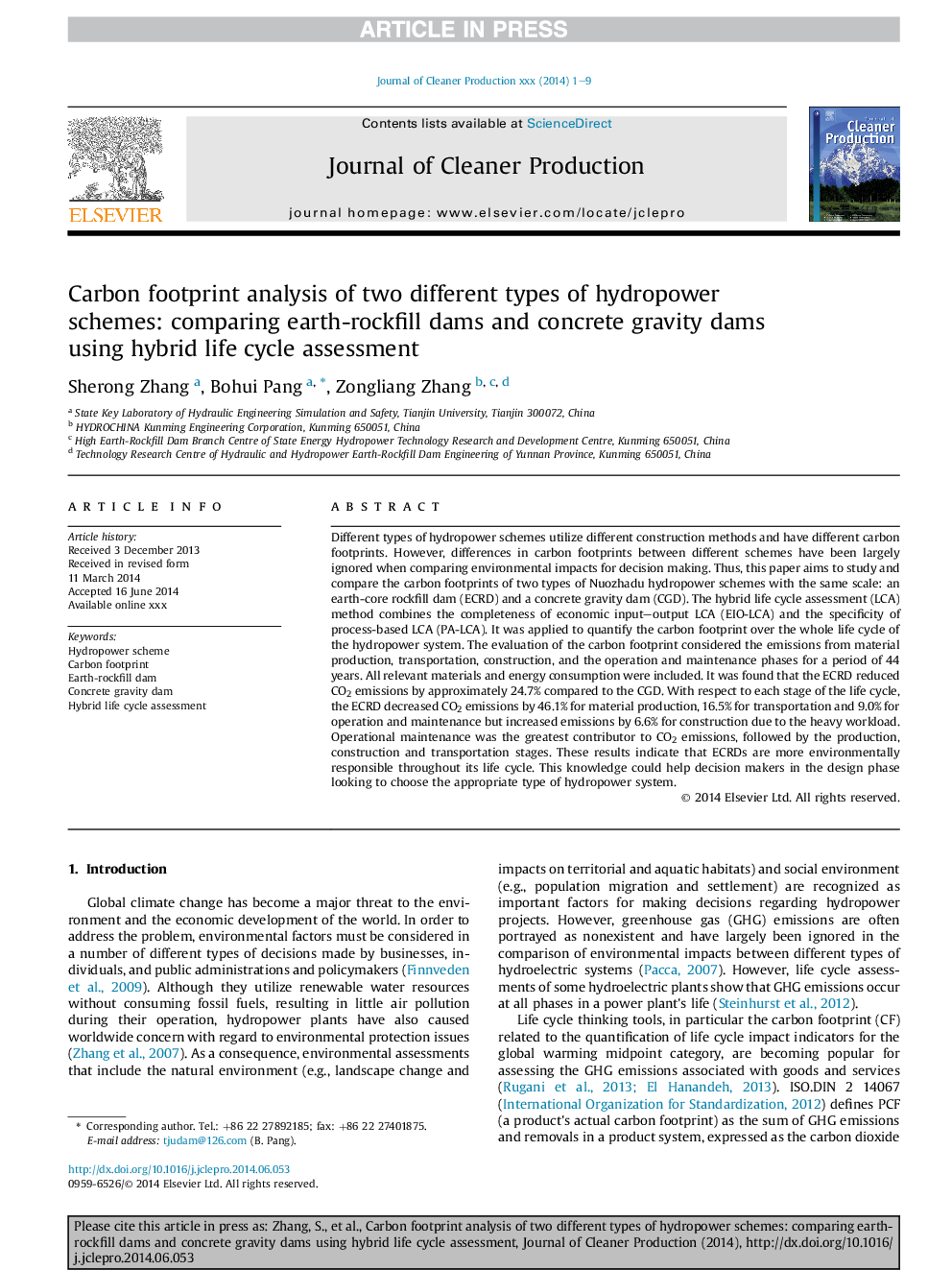| Article ID | Journal | Published Year | Pages | File Type |
|---|---|---|---|---|
| 8103704 | Journal of Cleaner Production | 2015 | 9 Pages |
Abstract
Different types of hydropower schemes utilize different construction methods and have different carbon footprints. However, differences in carbon footprints between different schemes have been largely ignored when comparing environmental impacts for decision making. Thus, this paper aims to study and compare the carbon footprints of two types of Nuozhadu hydropower schemes with the same scale: an earth-core rockfill dam (ECRD) and a concrete gravity dam (CGD). The hybrid life cycle assessment (LCA) method combines the completeness of economic input-output LCA (EIO-LCA) and the specificity of process-based LCA (PA-LCA). It was applied to quantify the carbon footprint over the whole life cycle of the hydropower system. The evaluation of the carbon footprint considered the emissions from material production, transportation, construction, and the operation and maintenance phases for a period of 44 years. All relevant materials and energy consumption were included. It was found that the ECRD reduced CO2 emissions by approximately 24.7% compared to the CGD. With respect to each stage of the life cycle, the ECRD decreased CO2 emissions by 46.1% for material production, 16.5% for transportation and 9.0% for operation and maintenance but increased emissions by 6.6% for construction due to the heavy workload. Operational maintenance was the greatest contributor to CO2 emissions, followed by the production, construction and transportation stages. These results indicate that ECRDs are more environmentally responsible throughout its life cycle. This knowledge could help decision makers in the design phase looking to choose the appropriate type of hydropower system.
Related Topics
Physical Sciences and Engineering
Energy
Renewable Energy, Sustainability and the Environment
Authors
Sherong Zhang, Bohui Pang, Zongliang Zhang,
